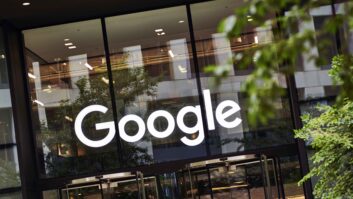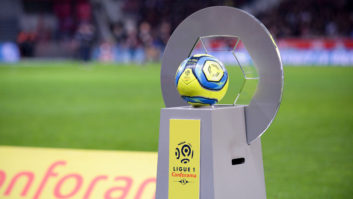It may already seem a lifetime ago that a barrage of fireworks lit up the London sky on New Year’s Eve, in a landmark spectacle that included pyrotechnics, poetry, 500 drones, multiple locations and a live choir singing ABBA. Since 2004, live events company Jack Morton has been working with the Mayor’s Office to produce the event that has become more important than ever as the only way of delineating between years.
But in 2021 they had the added challenge of keeping the project under wraps so as to not attract large crowds, since nobody knew whether the Covid situation would be a case of taking a chance on mass gatherings or here we go again with another lockdown.
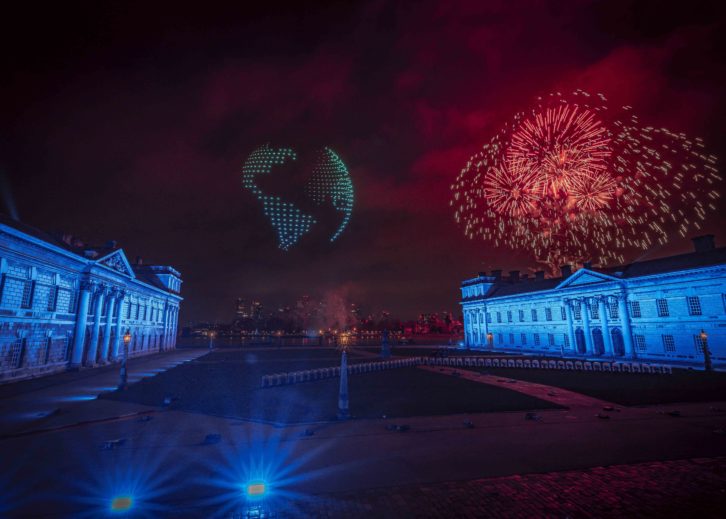
“The brief we had to answer was how we could build on 2020’s successes but still deliver another New Year’s Eve moment without the knowledge of what the situation was around live crowds,” explains Jim Donald, production director at Jack Morton. “And our response to that was pretty much what you saw: a multi-location piece, having learnt some lessons from the previous year about how we can synchronise it. In some ways we did it too well – people thought our 2020-21 was all pre-recorded or computer-generated! But the reality was everything is absolutely synced and everything is broadcast live, no matter what the elements are.”
Seamless transitions between the Globe Theatre, St Paul’s Cathedral and the National Maritime Museum made the locations seem as close together as they are erroneously presented in Marvel’s Thor: The Dark World. In fact the popularity of Maritime Greenwich as a filming location provided Jack Morton with a useful cover when it came to setting up without arousing suspicion. “We had lighting and security, some equipment, trucks and so on,” recalls Donald. “Passers by were going, ‘Is this to do with New Year’s Eve?’ and our team would say, ‘Absolutely not, we’re doing some filming!’” Maybe this is an indicator of superhero movie fatigue, but the tactic did stop large crowds from forming in Greenwich.
Likewise in Central London, Jack Morton, the Mayor’s Office and the BBC wanted to avoid creating a “honeypot” to attract people. “We had to have something which was lower key in Central London, had less impact and didn’t have to close the streets,” notes Donald. Shifting the emphasis to the Millennium Bridge and St Paul’s not only alleviated centralised pressure on roads and transport systems, it provided a blended view of London that Donald calls: “Modern and old, the contemporary and history of London – similar to Canary Wharf with the Old Royal Naval College, a great mix.” And one echoed by singing ABBA in Shakespeare’s Globe.
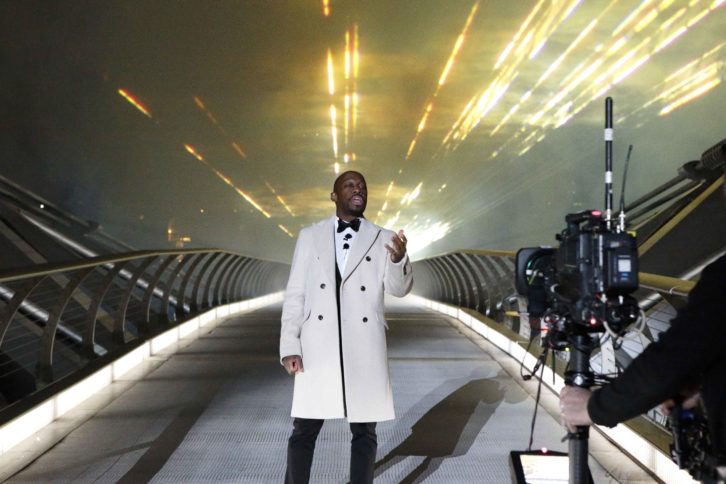
Through that spectacular view of the city, the team wanted to tell the story of London coming back to life in 2021, particularly the return of theatres and live events. “We wanted to put that live performance in, which was symbolised through the choir,” says Donald. “We also wanted more of a narrative, which is where we brought in the spoken word artist [Giles Terera] to offer reflection on the year. We could then move forwards after that piece with the hope and joy of some of the things which either had come back in 2021 or we’re looking forward to coming back in 2022. That’s the art of what we pulled together, of creating a very unique set of elements spread across the city; that with all of the intricacies of live TV broadcast, as well as live performance, we can create 12 to 13 minutes of live television in quite a complex scenario.”
That complexity meant planning for every eventuality, from Covid restrictions to weather precautions. “We almost ran out of alphabet for the number of contingencies we had this year,” remarks Donald. “We even had more people in the choir than we needed!” Of course one element that could not be rehearsed was the drone display, since nothing gives away a location like the sight of 500 flashing lights forming multicoloured representations of Elton John in the sky. “What other major show live on TV is done without rehearsal?” asks Donald. “The live performance we managed to rehearse but putting it all together, that was the first time we’d all seen it.”
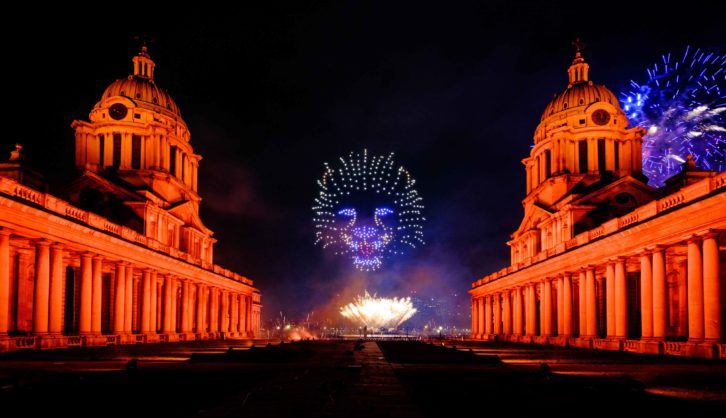
The result was the successful deployment of the largest drone fleet the UK has ever seen, and a smooth live show that gave new meaning to the phrase: ‘This programme contains flashing images.’ “There were a couple of little glitches that you wouldn’t notice, but the reality is that happens in every performance; the reality is that we had an incredibly clean show,” comments Donald. “It’s all in the planning, it’s all in the previs, so we actually understand what we’re going to be shooting and giving our friends at the BBC all of the tools that they need to make sure that they can plan their camera shots.”
“I think that the tradition is London trying to push the boundaries so we stand out, it’s not just the same thing,” concludes Donald. “Ultimately this is for the viewing public, they don’t get to see these things all the time, and I actually listen to how they compare London to the rest of the world; I remember the very first time we got the Sydney Morning Herald saying London’s giving Sydney a run for its money back in 2007.” 15 years later the Globe re-opened its doors, and the world was watching.

